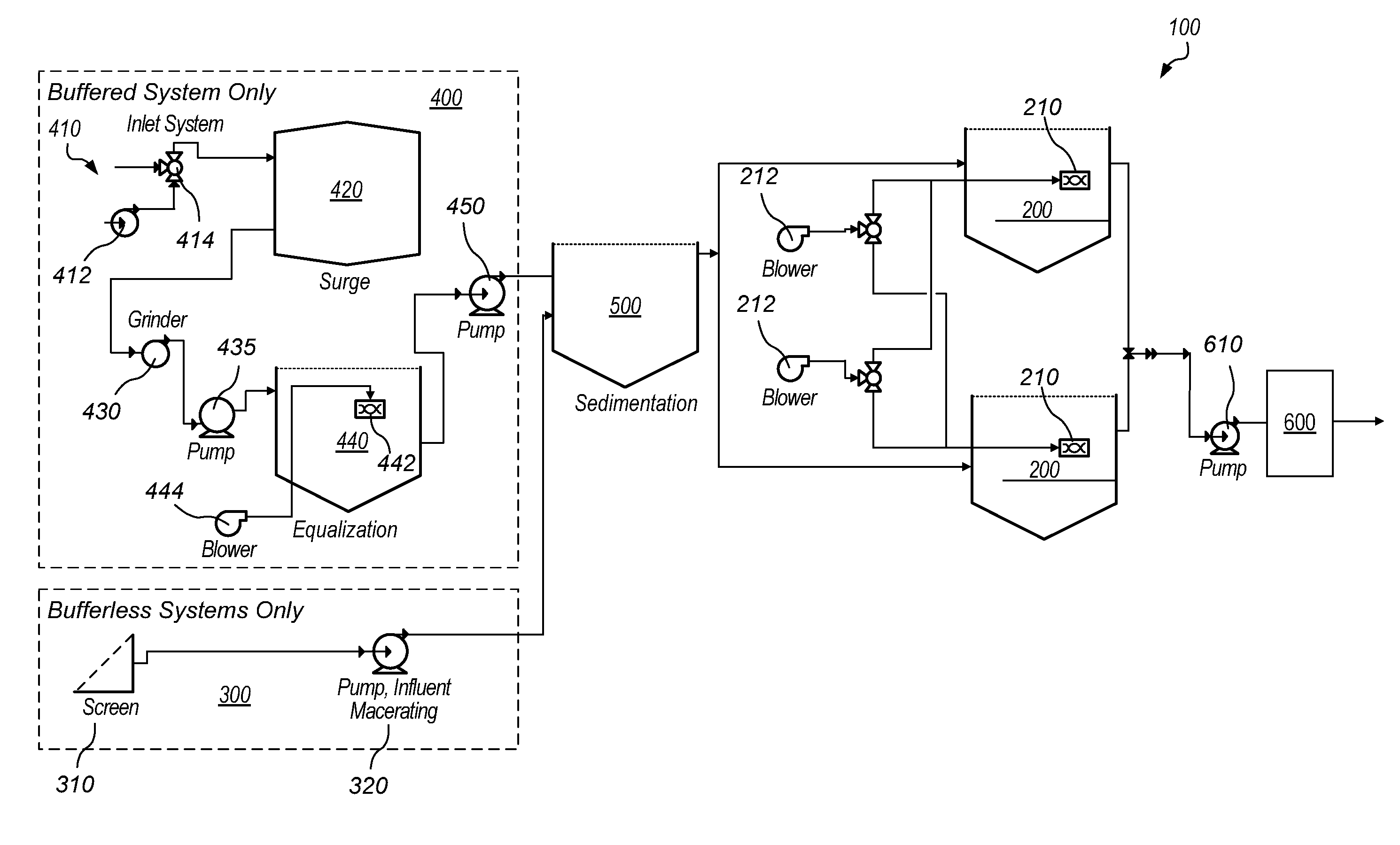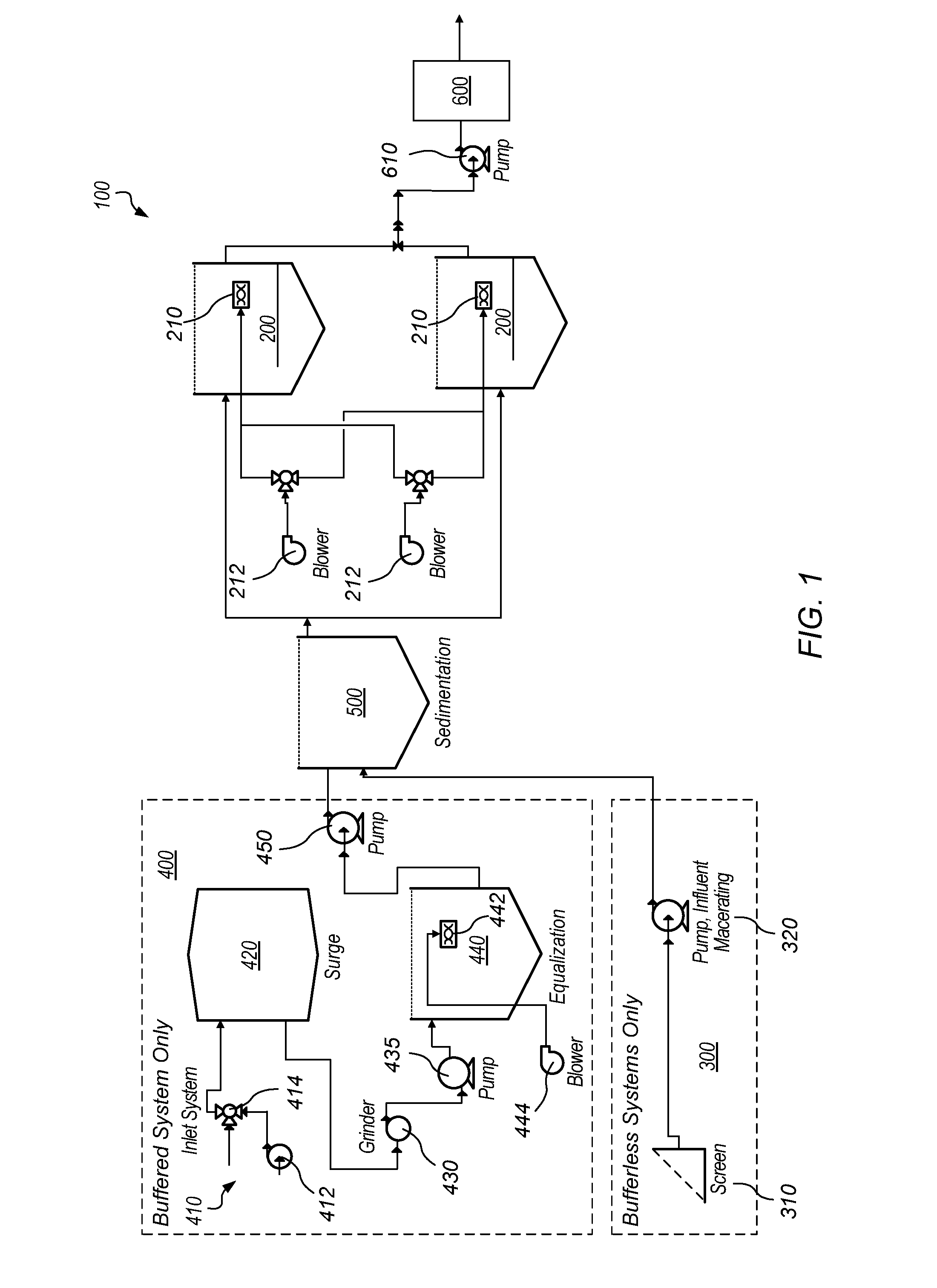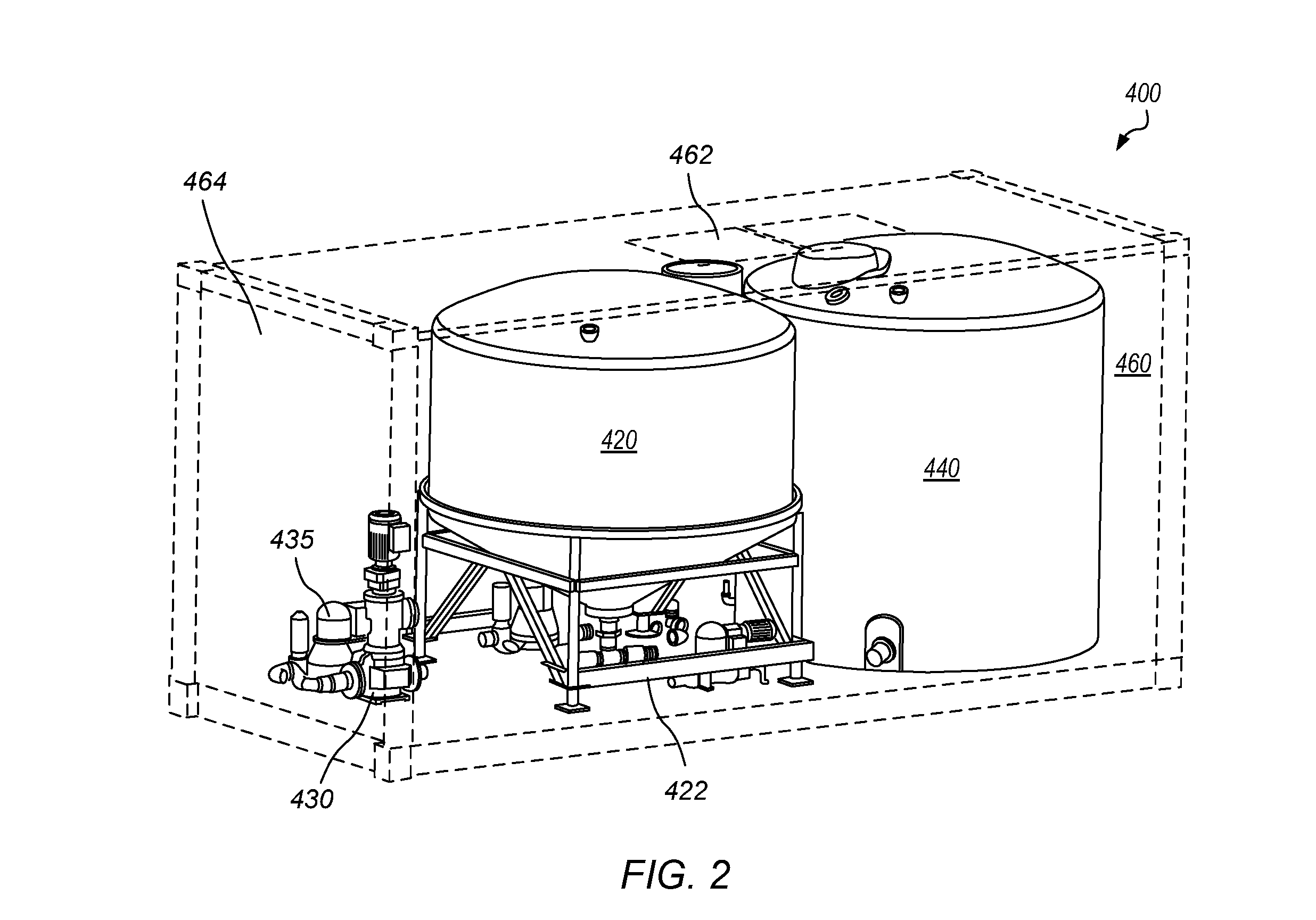Bioremediation reactor systems
a bioremediation and reactor technology, applied in the field of systems and methods for treating water, can solve the problems of time-consuming and inability to customize, and the biofloc or biomass of the sludge may be time-consuming, so as to reduce the concentration of contaminants, reduce the size of solid matter, and reduce the effect of contaminants
- Summary
- Abstract
- Description
- Claims
- Application Information
AI Technical Summary
Benefits of technology
Problems solved by technology
Method used
Image
Examples
example 1
Producing Bacteria in the Starvation Phase
[0138]Bacteria was incubated in a nutrient broth at a temperature of from approximately 25° C. to approximately 30° C. depending on which bacteria is being preserved. Bacteria in the genus Agrobacterium, Bacillus, Caulobacter, Enterobacter, Gordonia, Zoogloea and Peudomonas were incubated at 30° C. Bacteria in the genus Agrobacterium and Zoogloea were incubated at 26° C. The bacteria were allowed to incubate for 24 to 72 hours without the addition of an additional amount of nutrients. Bacteria in the genus Agrobacterium, Bacillus, Enterobacter, and Peudomonas were incubated for 24 to 48 hours. Bacteria in the genus Caulobacter and Gordonia were incubated for 48 to 72 hours. Bacteria were spectroscopically monitored to determine when exponential growth ceases and bacteria have entered the starvation phase.
[0139]In one embodiment, a specific bacteria mixture for use in treating wastewater includes Enterobacter cloacae, Pseudomonas putida, Pseu...
example 2
Producing Bacteria-Alginate Particles
[0140]40 g of sodium alginate was mixed into an aqueous solution to form solution more viscous than water. The alginate solution was autoclaved at 121 ° C. for 30 minutes. The alginate solution was then allowed to cool. 500 ml of bacteria in the starvation phase, prepared according to Example 1, was added to the alginate solution to form bacteria-alginate mixture. The bacteria-alginate solution was agitated. The bacteria-alginate solution was added in drops into 2 L of 0.55 M calcium chloride solution. The calcium chloride solution was mixed continuously. Particles, with a length and a width of approximately 5 mm, formed in the calcium chloride solution. The particles were then filtered under at least a partial vacuum using Whatman 40 filter paper, commercially available from Whatman (Middlesex, United Kingdom). The particles were then dried and stored.
PUM
| Property | Measurement | Unit |
|---|---|---|
| concentrations | aaaaa | aaaaa |
| temperature | aaaaa | aaaaa |
| temperature | aaaaa | aaaaa |
Abstract
Description
Claims
Application Information
 Login to View More
Login to View More - R&D
- Intellectual Property
- Life Sciences
- Materials
- Tech Scout
- Unparalleled Data Quality
- Higher Quality Content
- 60% Fewer Hallucinations
Browse by: Latest US Patents, China's latest patents, Technical Efficacy Thesaurus, Application Domain, Technology Topic, Popular Technical Reports.
© 2025 PatSnap. All rights reserved.Legal|Privacy policy|Modern Slavery Act Transparency Statement|Sitemap|About US| Contact US: help@patsnap.com



